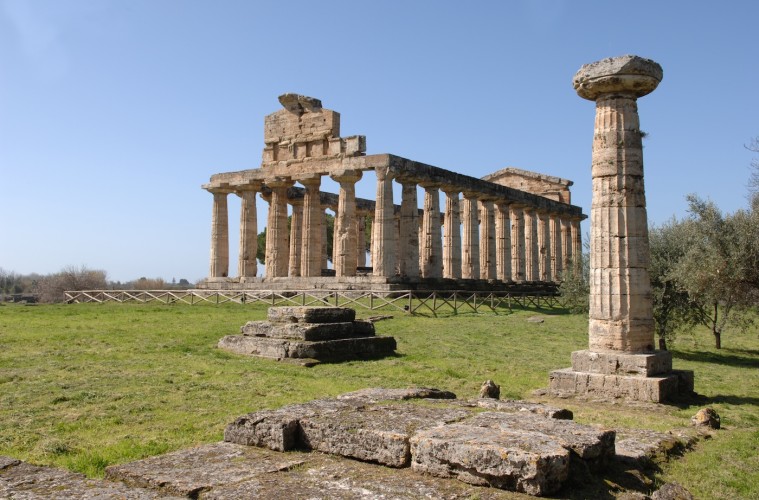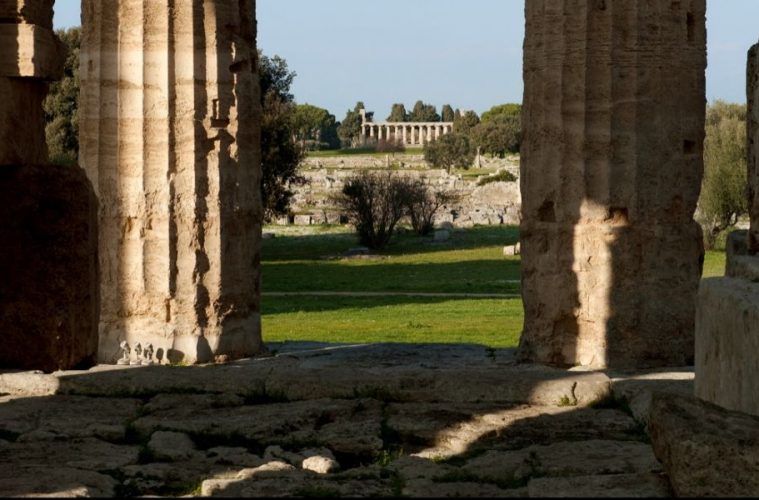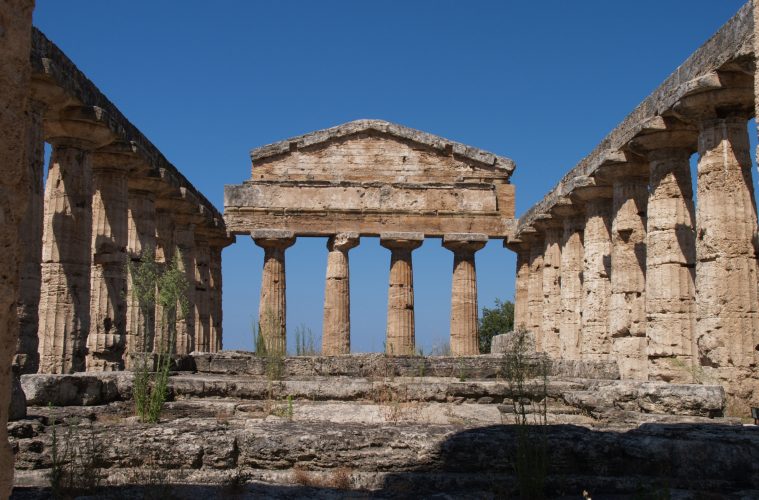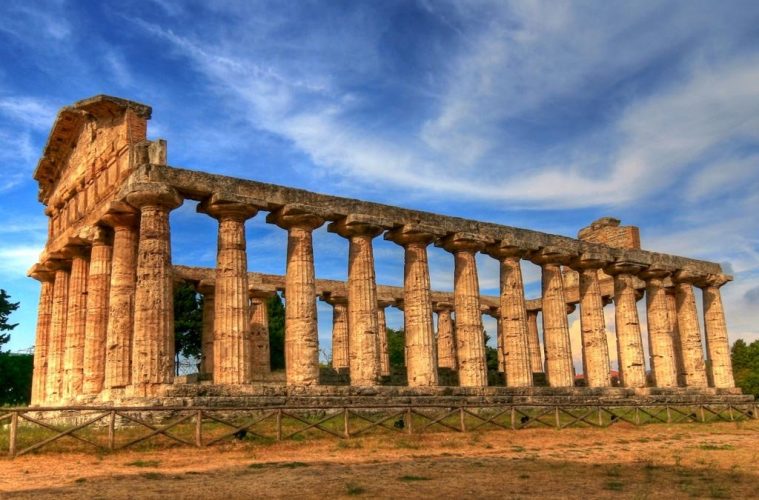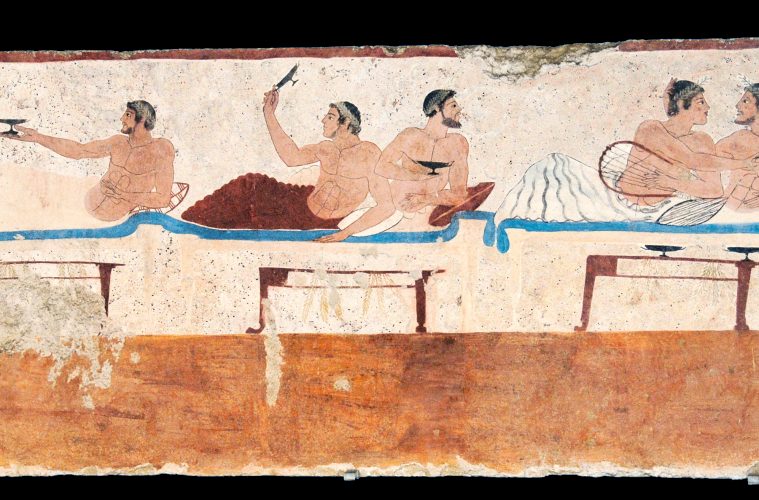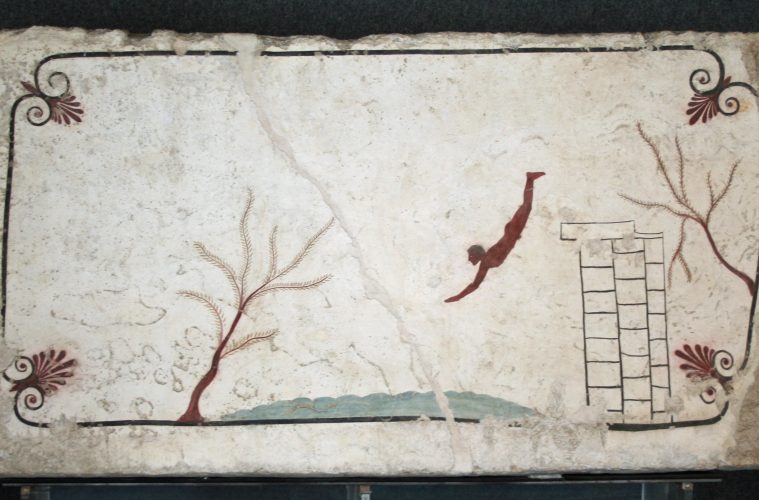A DAY IN PAESTUM
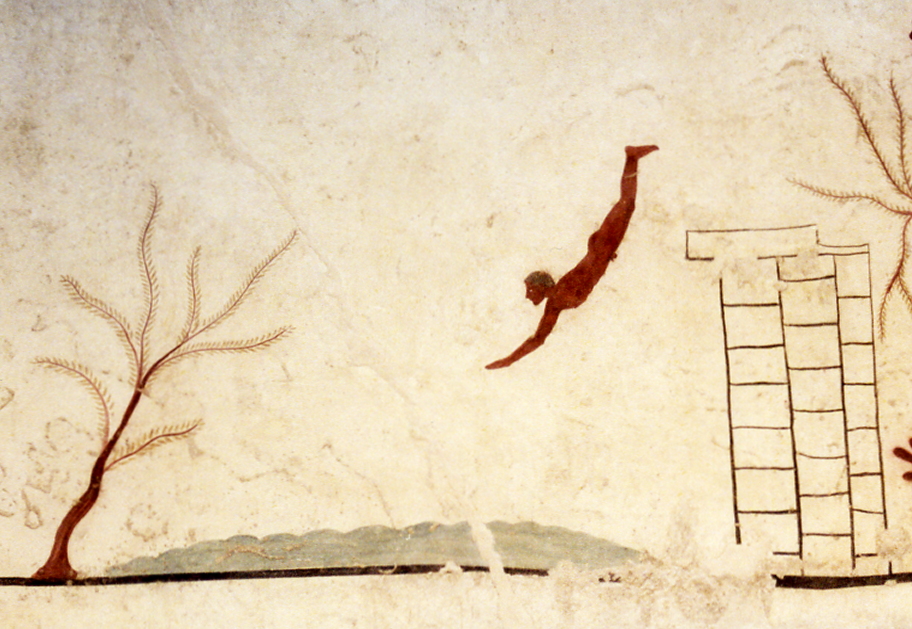
If there’s a place in Italy with the most complete Doric temples, it’s definitely Paestum. This city is currently at the centre of attention especially amongst archaeology and Greek history lovers who will be able to enjoy its impressive city walls, temples and museum.
Paestum, or Poseidonia as the city was originally called after Poseidon, the Greek god of the sea, was founded in the 6th century BC by Greek settlers and fell under Roman control in 273 BC. Decline later set in following the demise of the Roman Empire. Savage raids by the Saracens and periodic outbreaks of malaria forced the steadily dwindling population to abandon the city altogether.
The temple of Athena
The temple is dedicated to Athena, the goddess of crafts and warfare. It’s situated at the highest point of the city, overlooking the north area.
The first generation of colonists constructed a small building in honour of the goddess, then, in about 500 BC, a monumental temple was built. The inner part ,which is higher than the surrounding colonnade, was accessible through a large antechamber decorated with Ionic columns.
The Temple of Neptune
This is the largest temple at Paestum and is the best preserved.
The temple is built in about the mid-fifth century BC of enormous blocks held together with simple dowels without the use of mortar: this building technique has enabled the building to withstand earthquakes and other natural calamities.
The inner part of the temple was divided into three naves by two high colonnades on two levels which can still be admired. The roof was held up by wooden beams, and its tiles and eaves were made of terracotta with elaborate colourful decoration.
The Temple of Hera
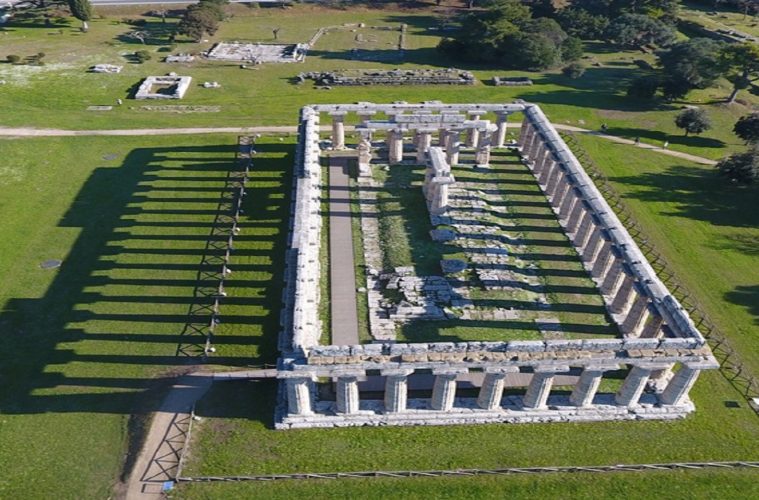
The temple of Hera is the oldest of the three large buildings. It’s the only Greek temple dating to a period of crucial importance to the formation of Greek architecture to have been preserved in such good condition.
The pediments are missing and the layout is not the standard one; the inner part is divided by a row of central columns, as was customary in ancient works of architecture built of wood.
In June 2016 an experimental itinerary was created which removed the architectural barriers, enabling all visitors to enter the temple.
The Museum. The Tomb of the diver
The Tomb of the Diver is the only evidence for large-scale Greek painting, other than on vases, prior to the fourth century BC. It is also unique in terms of the theme portrayed on it: a naked young man dives into the ocean, a visual metaphor for the transition from life to death. The tomb was found 2km south of Paestum inside a small cemetery dating to the sixth-fifth centuries BC. After the funeral, which was held in about 475 BC, the fresco remained in darkness for almost two and a half millennia until the discovery in 1968. The walls of the box tomb, made of travertine slabs, are decorated with scenes of a banquet.
How to reach:
Paestum is located on the Mediterranean coast 42 kilometers (26 miles) southeast of Salerno, 100 kilometers (62 miles) southeast of Naples. It is easily reached from Salerno by car. The quickest route is to take the A3/E45 to Battipaglia, then follow the S18 til you reach the turn-off for Paestum.
If you are traveling by train, the Stazione (railway station) di Paestum is only 800 yards from the ruins. Access can be gained through the perfectly preserved archway Porta Sirena, or—if driving—through the northern gate of Porta Aurea.




